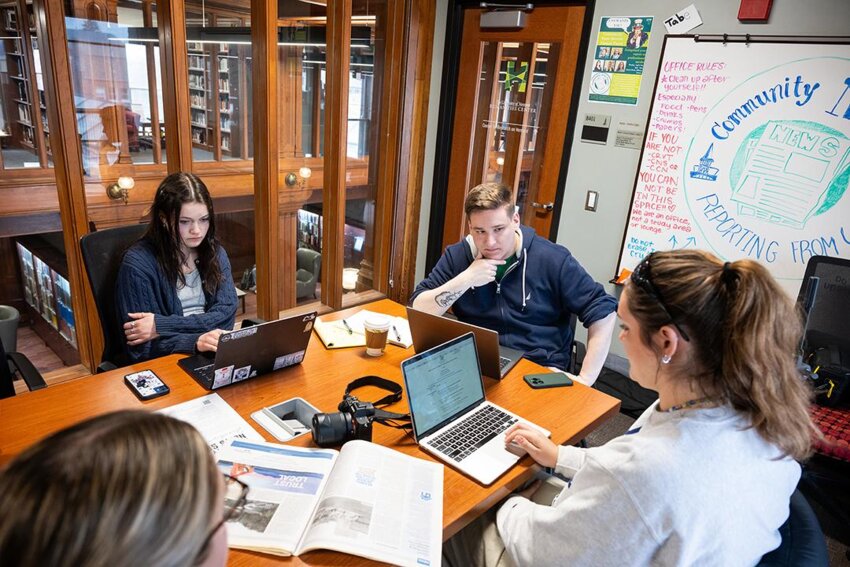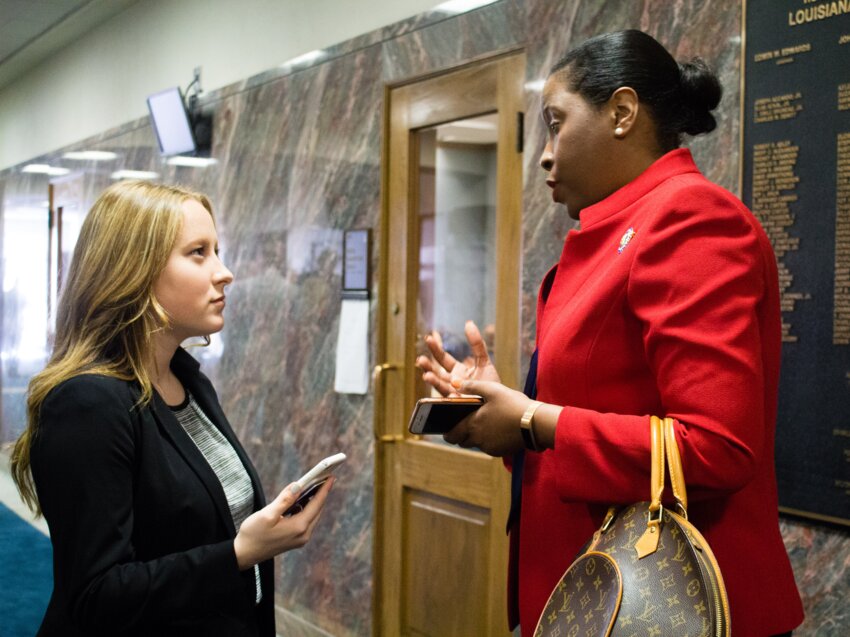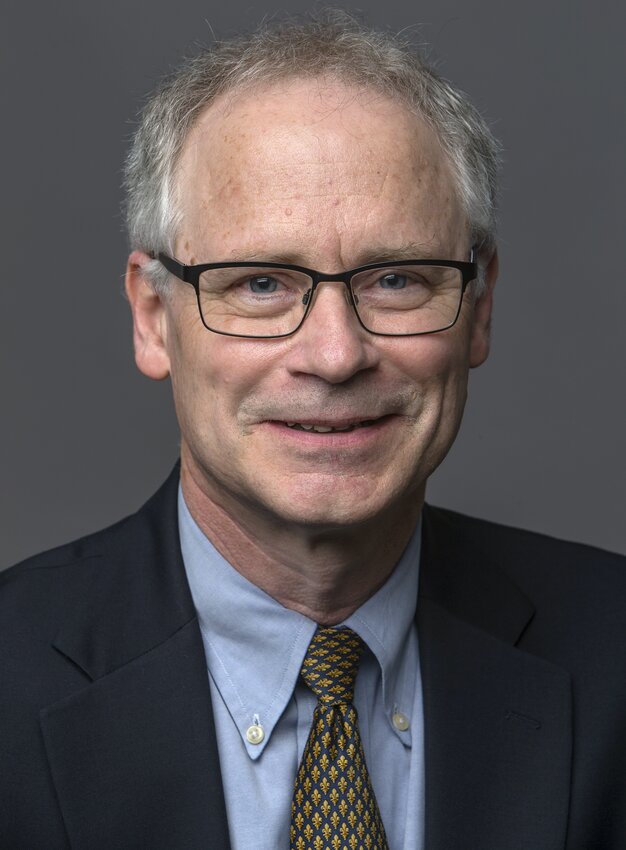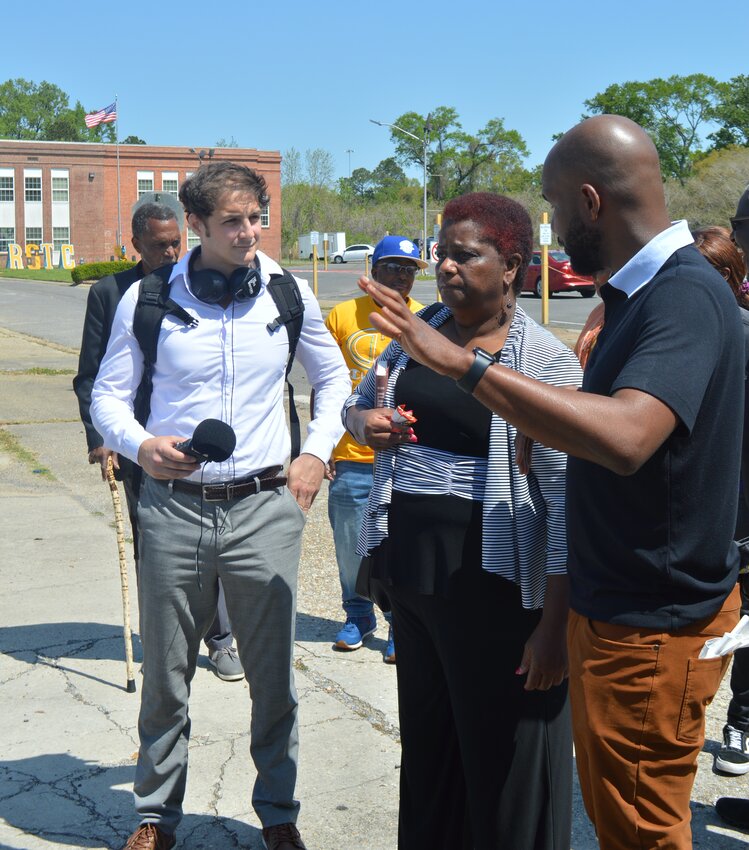The University of Vermont doesn’t carry the reputation of the legacy journalism powerhouses, but it is making a journalism splash far beyond the confines of its campus and state borders.
UVM's Center for Community News (CCN) coordinates efforts nationwide to pair professional editors with college students to produce local news. The idea is to give students hands-on educational opportunities to report and write news stories for local publications as part of their coursework. So far, more than 130 college programs are participating.
Among the universities already participating in UVM’s CCN program are the University of Missouri and Louisiana State University.
The Center for Community News has seen significant successes in the last few months. In July, the organization landed $7 million in grants from the Knight Foundation, the MacArthur Foundation and other organizations to propel the program to new levels.
And those levels are already impressive. In August, the CCN released an impact study of what it has accomplished from June 2023 through May 2024. The study surveyed leaders at 73 news-academic programs across 37 states and Washington, D.C. (There are 142 such programs in the database, but 73 participated in the survey.) A few key findings are:
Those numbers are certainly much larger, given the number of programs that didn't participate in the survey.

The CCN’s origins began in 2019 at the University of Vermont, which doesn’t even have a journalism major.
Richard Watts, the CCN director, said the university was curious about a teaching-hospital method to journalism, similar to what the University of Missouri has done for more than a century.
“In 2019, [UVM] asked me and some others to start a minor essentially,” Watts said. “And when we did that, we said, ‘We’re not going to invent another journalism school. There are too many great ones already.’ Right? So we said, ‘Let's do everything in partnership with local media and make it super-applied.’ It used to be you took your classes, got an internship, got another internship and then got your first job. There is less of that now. More schools are realizing that, to give our students these experiences, we must bring [publication work] into the curriculum. What we did at the University of Vermont is we offer courses, but we have paid editors who then work with our community papers. So, a student gets an assignment for the paper, the editor edits it, and then it's available for the paper. We publish around 400 stories annually in 20 small newspapers across Vermont."
From there, the CCN began rolling out the concept to other universities in other states.

“Nobody connected all the programs — what we call ‘university-led reporting,’” Watts said. "Not student media or external internships, but programs where there’s a professional faculty member — always with media experience — who edits and vets the student’s work and makes it available to local partners.”
The students are doing the work through classroom requirements, unlike many student publications that are student-led.
“So it could be that there’s a faculty member teaching an advanced reporting class," Watts said. “They’re in touch with [the local paper] and say, ‘Here are some of our student stories. Do the stories work for you?' The paper might then respond, ‘Well, have you edited and vetted them? Because we don’t have time.’ The faculty member happened to have been a reporter at the paper, so the paper knew them.”
The CCN model is one of many ways universities, nonprofits and for-profit organizations overlap their resources to stop the bleeding of dissipating journalism — particularly in rural regions.
Watts said reporters are sometimes paid for their work if the reporting spills outside the classroom requirements — such as during winter, spring or summer break — but the work is generally part of the curriculum.
“You actually get to build your portfolio,” he said. “You get published clips. You build your networks. You figure out if this is something you want to do because not everybody will go on and be a reporter. You do that as part of your credit experience, opening the door to more students. Previously, the internship model was more available to the select few, and now, if you do it in a classroom, everybody gets to have a chance to try this.”

Chris Drew, a professional-in-residence at LSU’s Manship School of Mass Communication, leads the students’ efforts in reporting on the Louisiana legislature and students’ work in investigating cold cases involving hate crimes from the Civil Rights era. That project has been ongoing since 2009.
For LSU, publishing students’ stories in local publications is not new. However, once Drew and Watts connected, they were able to dream up a larger network for students and local publications.
“When I realized how many colleges were involved in providing local news with their students, I realized we could be a flagship school. We could create an initiative to bring in money and help all the smaller schools, the state schools and the HBCUs get their students and professors involved and provide coverage in urban minority areas and rural and small towns. I had never even conceived of that possibility before. I saw what he was learning and started talking to him about possibilities.”

Drew said the idea of writing real stories for real publications helps students take their work more seriously than traditional assignments, where students can interview their roommates for assignments and receive credit.
“If you're just doing it in a classroom, it’s not the same. If you’re doing it for a statehouse bureau or a local news hub and your stories are on the front page, everybody sees them. It’s completely different and a much better learning experience.”
Drew added, “I view it as the third wave in journalism, and perhaps the biggest as we try to save local news. We have two centuries or more of traditional journalism — what people refer to as the mainstream media. We’ve had 20-something years of nonprofit newsrooms springing up. However, most nonprofit newsrooms are in urban areas and employ people who used to work for local newspapers. The numbers are dropping in terms of jobs and the number of people in journalism. So where are we going to get new energy? Where will we get more bodies and boots on the ground for more coverage? The best hope right now is the journalism students and other students interested nationwide. We’ve got a lot of professors who were former journalists who were frustrated by how little news is in their communities now. How can we unleash these students and guide them to help solve some of these problems?”
Drew, an author and longtime New York Times investigative reporter, is excited about learning how to build more student-to-publication pipelines. Momentum is building with the concept.
“You know, I’ve met so many people, and we have great camaraderie, and you feel so encouraged that this is the right path because so many people are working hard to make these things work. And I had no idea before he (Watts) started doing this stuff.”
 Bob Miller has spent more than 25 years in local newsrooms, including 12 years as an executive editor with Rust Communications. Bob also produces an independent true crime investigative podcast called The Lawless Files.
Bob Miller has spent more than 25 years in local newsrooms, including 12 years as an executive editor with Rust Communications. Bob also produces an independent true crime investigative podcast called The Lawless Files.
Comments
No comments on this item Please log in to comment by clicking here